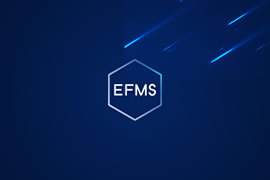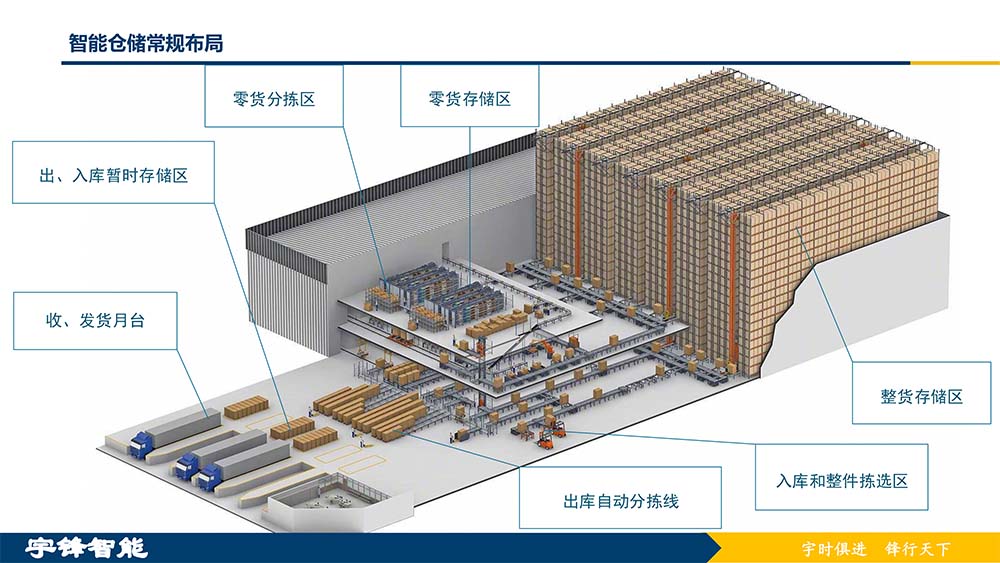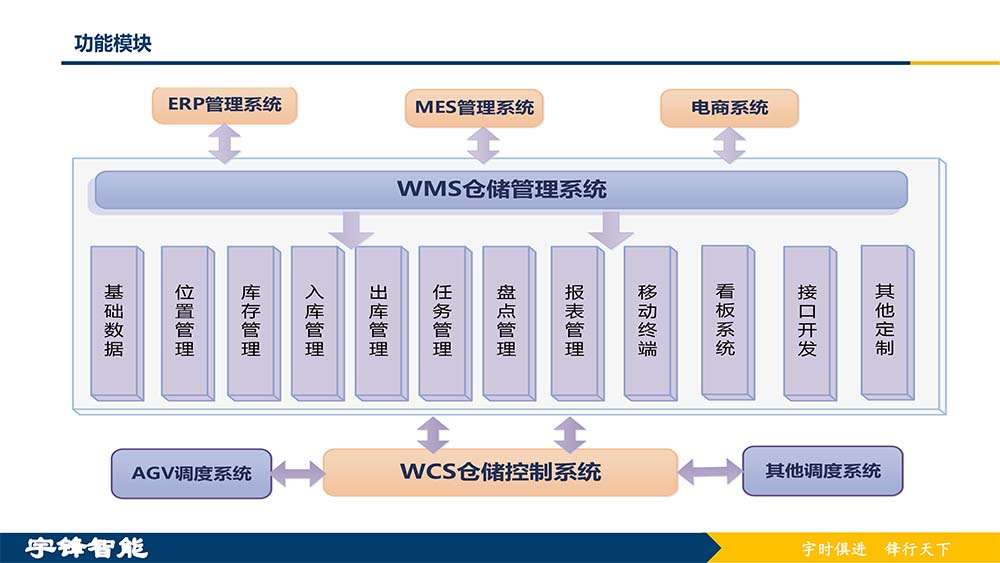 Information system
Information system

Hardware requirements: 4GB or more of RAM storage, 20GB or more of ROM storage.
System requirements: Ubuntu 16.04 system, Ubuntu 20.04 system, Windows system above 10, Windows server system above 2016.
Service environment:
System requirements: Suitable for all operating systems.
Adapted browsers: Chrome browser, Edge browser (unadapted browser can also be used, but with some abnormal functions).EFMS (EFORK Fleet Management System) can simultaneously support hundreds of different vehicle models operating collaboratively on the same site and swiftly optimize AGVs, calculate globally optimal navigation routes, and complete order tasks in the shortest time possible to ensure the most efficient operations.
Front-end and back-end deployment environments:
|
Function |
Description |
|
|
Monitoring function |
The AGV operation monitoring |
Through upper-level monitoring, dynamically display the actual operation status of AGVs on the map. |
|
AGV status monitoring |
Through upper-level monitoring, obtain real-time information about each AGV's current position, status, battery level, executed tasks, and other relevant information |
|
|
Task Dispatch |
Transportation order management |
Manage transport orders initiated manually or sent by other systems |
|
Manual AGV dispatch |
Manually call AGVs within the system and dispatch them to any designated stations |
|
|
Intelligent AGV dispatch |
Intelligently dispatch nearby AGVs based on task conditions for task handling |
|
|
Parking area waiting |
When there are no relevant transport tasks, automatically dispatch AGVs to the nearest parking area to wait, reducing occupation of positions in the workshop area |
|
|
Charging management |
Intelligent automatic charging |
When AGV battery level falls below the warning threshold or when AGV capacity is sufficient, automatically dispatch low-battery AGVs to the charging area for recharging. They can resume task assignments only after reaching the permitted charge level |
|
Regular charging |
According to the owner's choice, set a fixed time period to charge the vehicle |
|
|
Intelligent charging station management |
The system automatically assigns charging stations to AGVs. Upon arrival at the charging area, the charging stations are notified to commence charging for the AGVs |
|
|
Route Dispatch |
Map editing |
In the upper-level system, dynamically draw or adjust maps, with real-time updates taking effect immediately on the map, eliminating the need for AGVs to program map information. |
|
Regional association |
Linking sites and routes, setting different dispatch strategies (e.g., allowing only one vehicle to enter...) |
|
|
CAD map import |
Build simulation project using project CAD map |
|
|
Cross-floor cross-factory area |
The map of different factory area and different floors can be connected to realize the compound dispatch function |
|
|
Intersection route planning |
Systematically control traffic flow through intersections or one-way zones, dispatching AGV passage order to prevent congestion |
|
|
Intelligent route adjustment |
When AGV encounters congestion and cannot move forward for more than a certain time, try to find new routes to dispatch to improve AGV and utilization |
|
|
data handling |
Digital analysis |
Through monitoring and real-time recording of AGV related operation data, it can facilitate the use of big data for AGV operation efficiency analysis |
|
Intelligent remote warning |
Early warning information can be timely notified to relevant personnel through monitoring or SMS (email) for timely processing |
|
|
Middleware expansion |
Software system integration |
Integration with internal factory systems such as ERP, MES, WMS, etc., to avoid data silos |
|
Mobile applications |
AGV operation is monitored through a handheld PDA or any other mobile device, and AGV dispatching can be performed through a PDA |
|
|
Elevator, automatic door linkage |
When AGVs need to pass through elevators and automatic doors, the system coordinates the operation of elevators and automatic doors to facilitate the automatic passage of AGVs |
|
|
Rack storage area management |
Managing the relevant positions of racks, recording whether positions are occupied, and automatically allocating positions for AGV transportation of racks |
|
|
The AGV intelligent expansion |
Enhanced functionalities can be configured for AGVs when performing different tasks at relevant stations, such as activating roller conveyor belts, adjusting speed, starting or stopping at specific points, or adjusting obstacle avoidance ranges |
|
|
Business functions customization |
Secondary development according to other customized needs of customers |
|

The I/O interaction function can realize many extended functions of AGV, such as automatic charging, remote calling, automatic door/elevator association, etc.
The automatic charging system consists of a charger, an AGV power detection device and a charging management system. During the operation of the AGV, the power detection device monitors the discharge of the battery in real time, and when the discharge reaches the specified value, a charging application is generated. The AGV submits a charging application to the console through the wireless LAN, and the console dispatches the AGV to the charging station for charging.
The remote call system hardware needs to expand the call module of the call point. When the call function is required, click the call panel button and send the command to the AGV through the wireless communication system. The AGV will automatically complete the specified handling function after logic confirmation.


The WMS warehouse management system integrates the functions of batch management, material correspondence, inventory counting, quality inspection management, virtual warehouse management and real-time inventory management through the functions of inbound business, outbound business, warehouse allocation, inventory allocation, and virtual warehouse management. The management system is used to effectively control and track the whole process of warehouse business logistics and cost management, and realize or improve the enterprise's warehouse information management. Yufeng Smart WMS can perform inventory operations independently, and can also be used in combination with documents and vouchers from other systems; it can provide enterprises with more complete logistics management processes and financial management information.
Features:
■ Timely data collection, precise process management, fully automated intelligent guidance, and improved work efficiency;
■ Precise positioning management of storage locations, comprehensive status monitoring, and full use of limited warehouse space;
■ When goods are put on and off the shelves, the full intelligence automatically allocates the warehouse locations for the on and off shelves according to first-in first-out, avoiding human errors;
■ Real-time control of inventory situation, reasonable maintenance and control of enterprise inventory;
■ Through the automatic collection of batch information, the traceability of the production or sales process of the product is realized.




WCS is a layer of management control system between the WMS system and the PLC system. On the one hand, it interacts with the WMS system, accepts the instructions of the WMS system, and sends them to the PLC system to drive the production line to generate corresponding machinery. Action, on the other hand, it reflects the status and data of the PLC system on the interface in real time, and provides a manual debugging interface for the PLC system and production line.
Lean: more detailed and comprehensive management of warehouse business;
Automation: Through the docking with hardware equipment, the automation of storage operations such as outbound and inbound storage is realized, and it is unmanned;
Intelligent: In accordance with the standard principles of inventory management (zero first, first in first out, inventory ABC, etc.), the "brain" of warehouse management is formed through computer algorithms;
Realize 8 steps of warehouse management: chasing, collecting, checking, storing, picking, sending, retrieving, and returning;
WCS core technology:
Modular design: Highly modular configuration, flexible design and easy expansion;
Algorithm: Path algorithm, anti-blocking strategy;
Monitoring: Real-time monitoring of equipment; professional and innovative UI design;
Secondary development: Support secondary development of scripts, etc.; support various databases such as SQLSERVER and MYSQL;
Data analysis: Automatically generate relevant chart reports; configurable data analysis functions;
Openness: It is convenient to connect with WMS system, supports multiple connection methods: API, Web Service, database, etc.; supports mainstream industrial protocols, and directly communicates with PLC and other equipment;
It can quickly connect with various general-purpose equipment to realize intelligent equipment operation;
Main Specifications::


MES (Manufacturing Execution Systems), manufacturing execution system. It is a factory (workshop)-level management information system located between the upper-level enterprise resource planning system ERP and the bottom-level industrial process control system PCS. It takes manufacturing as the core and aims to improve the production and operation efficiency of the entire enterprise.
According to the definition of MES by MESA, the 11 functions of MES mainly include:
1. Allocation and monitoring of production resources;
2. Operation planning and scheduling;
3. Process specification standard management;
4. Data acquisition (device is connected online to collect real-time data and various parameter information, control system interface, generate production data records, quality data, performance information, and account accumulation);
5. Operation staff management;
6. Product quality management;
7. Process management (process control, APC, model-based analysis and simulation, interface with external analysis system);
8. Equipment maintenance;
9. Performance analysis;
10. Production unit scheduling;
11. Product tracking.


ERP system is the abbreviation of Enterprise Resource Planning (Enterprise Resource Planning). Management platform. It is a new generation of integrated management information system developed from MRP (Material Requirements Planning). It expands the functions of MRP, and its core idea is supply chain management.




